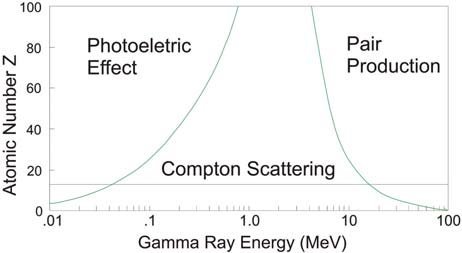What are gamma rays and its uses?
Gamma rays are a type of electromagnetic radiation that possess high energy, high frequency, and short wavelengths. They are produced by various processes including radioactive decay, nuclear reactions, and high-energy events in space such as supernovae.
Gamma rays have a multitude of uses across different fields. In medicine, they are used in diagnostic techniques like Positron Emission Tomography (PET) scans, and in therapeutic interventions like radiation therapy to treat cancer. In industry, gamma radiation are used for purposes such as sterilization of equipment and materials, and in non-destructive testing to evaluate the structural integrity of materials. They are also used in scientific research for studying high-energy astrophysical phenomena.
Are gamma rays safe for humans?
Gamma rays are not inherently safe for humans and can be harmful if one is exposed to high doses or for extended periods. Due to their high energy, they have the ability to penetrate tissues and cells, which can result in cellular damage or mutations. This is why protective measures are essential when working with or near gamma rays. For instance, in medical procedures, the benefits of using gamma radiation are carefully weighed against the potential risks, and efforts are made to minimize exposure.
What is the simple definition of gamma rays?
Gamma rays are high-energy light waves that are part of the electromagnetic spectrum. They are more energetic than X-rays and can penetrate materials and biological tissues.
Why is gamma called rays?
The term “ray” is a historical designation that originated when scientists were first understanding the nature of radiation. Initially, the behavior of these high-energy emissions was not fully understood, and they were observed to travel in straight lines, much like rays of light. Thus, they were termed “gamma rays,” following the naming conventions set for alpha and beta radiation, which were discovered earlier. The name has stuck and continues to be used to describe this form of electromagnetic radiation, even though we now understand them to be high-frequency electromagnetic waves.
Properties of Gamma Rays
Origin and Energy Range
Gamma radiation are a form of electromagnetic radiation that originates from processes within atomic nuclei. These gamma rays are typically emitted during events like radioactive decay, nuclear fission, or fusion. In terms of energy, gamma rays can vary from thousands to millions of electronvolts (keV to MeV), categorizing them at the high-energy end of the electromagnetic spectrum.

Physical Characteristics
Gamma rays stand out as extremely high-frequency electromagnetic waves, having wavelengths in the picometer range. Unlike other types of electromagnetic radiation, gamma rays are uncharged. This unique characteristic allows gamma radiation to penetrate through many different types of materials.
Ionizing Properties of Gamma Rays
One of the defining features of gamma radiation is their ionizing capability. These gamma radiation are so energetic that they can dislodge electrons from their atomic orbits, which can potentially cause cellular and genetic damage. However, this ionizing ability of gamma rays is also leveraged in medical treatments, such as radiation therapy for cancer.
How Gamma Rays Interact with Matter
When gamma rays do come into contact with matter, they generally interact through one of three mechanisms: the photoelectric effect, Compton scattering, or pair production. These interactions involving gamma radiation can be used in diverse applications, from medical imaging to constructing radiation detectors.
Astrophysical Importance
Gamma rays serve as crucial messengers from extreme environments in the universe. These include black holes, pulsars, and supernovas. Gamma radiation have the unique ability to escape from regions with intense gravitational or electromagnetic fields, making them invaluable for astrophysical research.
Applications and Utility
In addition to their natural occurrences, gamma radiation have a wide variety of applications. Gamma rays are used in scientific research, medical treatments like cancer therapy, and industrial applications such as radiography and sterilization.
Medical Applications
In the medical field, gamma rays find uses both diagnostically and therapeutically.
Radiation Therapy for Cancer
One of the most prevalent uses of gamma radiation in the medical field is for the treatment of cancer through radiation therapy. Gamma rays can be directed with high precision to target and destroy cancerous cells. Their high energy levels allow for deep penetration, making them effective for treating tumors that are not easily accessible by surgical methods. This enables healthcare providers to treat a variety of cancers, from skin and breast cancer to more deeply situated tumors like those in the lung or brain.
Gamma Knife Surgery
Another significant medical application of gamma rays is in gamma knife surgery, which is a form of stereotactic radiosurgery. This procedure focuses multiple beams of gamma radiation onto specific areas of the brain to treat conditions like tumors, vascular malformations, and trigeminal neuralgia. It is a non-invasive alternative to traditional surgery and is especially useful for treating conditions in delicate or hard-to-reach areas of the brain.
Diagnostic Imaging
Gamma rays are also used in diagnostic procedures, particularly in nuclear medicine. Techniques like Single Photon Emission Computed Tomography (SPECT) and Positron Emission Tomography (PET) scans often utilize isotopes that emit gamma radiation. These rays are detected to create detailed images of the internal structure of the body, helping doctors to diagnose conditions, plan treatments, and monitor disease progression.
Sterilization of Medical Equipment
Gamma rays are also employed for the sterilization of medical instruments and supplies. Their high-energy ionizing characteristics are effective at killing bacteria and other pathogens, ensuring that the equipment is free from contaminants. This is particularly useful for sterilizing items that are sensitive to heat or chemicals.
Research and Development
In addition to these applications, gamma rays are the subject of ongoing medical research. Scientists are exploring ways to harness their unique properties for new diagnostic and therapeutic techniques, including the targeted delivery of radiation for treating specific types of cancer more effectively.
Role in Astronomy
Gamma rays play a significant role in the study of extreme cosmic events and objects, such as supernovae, pulsars, black holes, and neutron stars. These phenomena are characterized by high energy levels, which result in the emission of gamma rays. By studying these emissions, astronomers can gain valuable insights into the underlying processes that govern these objects.
Specialized Telescopes for Gamma-Ray Observations
Gamma-ray observations are typically conducted using specialized telescopes like the Fermi Gamma-ray Space Telescope. These telescopes are usually located in space to bypass the interference caused by Earth’s atmosphere, enabling more precise measurements.
Cosmic Ray Origins
Gamma rays are also essential for investigating the origins of cosmic rays—highly energetic particles that bombard Earth from space. By studying the gamma rays associated with cosmic rays, astronomers can deduce the processes that accelerate these particles to such high energies.
Probing Dark Matter
Another intriguing application of gamma-ray astronomy is in the study of dark matter. Although dark matter doesn’t emit light or energy, it can interact in ways that result in the emission of gamma rays, providing astronomers with clues to its properties and distribution in the universe.
Insights into Active Galactic Nuclei
Active Galactic Nuclei (AGN) are among the most energetic and bright objects in the universe. Observations of gamma rays emitted from these phenomena provide valuable data on the extreme processes occurring in the cores of these galaxies.
Astrophysical Cosmology
Gamma rays also contribute to our understanding of the larger-scale structure of the universe, including theories surrounding the Big Bang and the subsequent development of the universe. They offer a way to investigate the cosmic microwave background radiation, providing information about the universe’s rate of expansion and its fundamental composition.
Nuclear Physics Applications
In the field of nuclear energy, gamma rays play a significant role in monitoring and controlling reactions within nuclear reactors. Gamma spectroscopy, a method for the identification of radioactive isotopes, can be employed to analyze the byproducts of fission reactions. This assists in ensuring the efficient and safe operation of reactors, by enabling precise control over fuel composition and other factors.
Waste Management and Decommissioning
Gamma rays are employed in the assessment and management of radioactive waste. The penetrating power of gamma radiation allows for remote sensing capabilities, thereby facilitating the assessment of waste materials that are unsafe for direct human contact. This is crucial in the long-term management of nuclear waste and the decommissioning of nuclear facilities.
Fundamental Research in Nuclear Physics
Gamma rays are indispensable for probing the structure of atomic nuclei. High-resolution gamma-ray spectroscopy can offer insights into the energy levels and decay patterns of radioactive elements. Such information is crucial for refining theoretical models of nuclear structure, which has broader implications for our understanding of matter and the fundamental forces in nature.
National Security Applications
The detection of gamma radiation is key in border security and non-proliferation efforts. Gamma detectors can identify illicit transportation of radioactive materials across borders. This is especially crucial in preventing the spread of materials that could be used in “dirty bombs” or other types of radiological dispersal devices.
AstroNuclear Physics
Lastly, gamma rays also find applications in the field of astrophysics, particularly in the study of phenomena like gamma-ray bursts, which are among the most energetic events in the universe. Understanding these bursts aids nuclear physicists in piecing together the life cycles of stars, the formation of black holes, and the behavior of matter under extreme conditions.
By serving multiple crucial roles, from practical applications in energy and security to aiding in our fundamental understanding of the universe, gamma radiation prove to be a multifaceted tool in the field of nuclear physics.

Risks and Safety Measures
Risks
The primary risk associated with gamma rays is ionizing radiation exposure, which can damage living tissues and genetic material. Prolonged or intense exposure to gamma radiation can lead to radiation sickness, increased risk of cancer, or in extreme cases, death. Moreover, because gamma rays can penetrate most materials, they pose a unique challenge in terms of containment. For instance, in a nuclear facility, any accidental release of gamma radiation can be very dangerous not just for the workers but potentially for the surrounding environment as well. In security settings, gamma radiation could be used in harmful ways if radioactive materials fall into the wrong hands, such as in the creation of “dirty bombs.”
Safety Measures
Given these risks, several safety measures are implemented to mitigate the impact of gamma radiation. These generally include:
1. Shielding:
Dense materials like lead or thick layers of concrete are commonly used to shield against gamma radiation. Unlike alpha or beta radiation, gamma rays require substantial thickness for effective shielding.
2. Remote Handling:
Robotics and remote handling tools are often used to manage gamma radiation sources, especially in high-risk environments like nuclear reactors or waste management facilities.
3. Personal Protective Equipment:
Though PPE like lab coats and gloves won’t protect against gamma rays, they are essential for protecting against contamination by radioactive material that may also emit gamma radiation.
4. Monitoring and Detection:
Devices like Geiger-Müller counters and scintillation detectors are used to continuously monitor radiation levels. These devices are crucial in both emergency response scenarios and routine monitoring.
5. Regulatory Oversight:
National and international bodies impose strict regulations on the use, transport, and disposal of gamma radiation sources. This involves licensing, regular inspections, and stringent guidelines on safety protocols.
6. Education and Training:
Workers who are at risk of exposure undergo rigorous training in radiological safety, and they are often required to wear dosimeters to monitor their radiation exposure over time.
7. Emergency Preparedness:
Protocols for accidental radiation exposure, including immediate evacuation, containment procedures, and medical interventions like iodine tablets (which protect the thyroid gland), are established to manage emergencies effectively.





